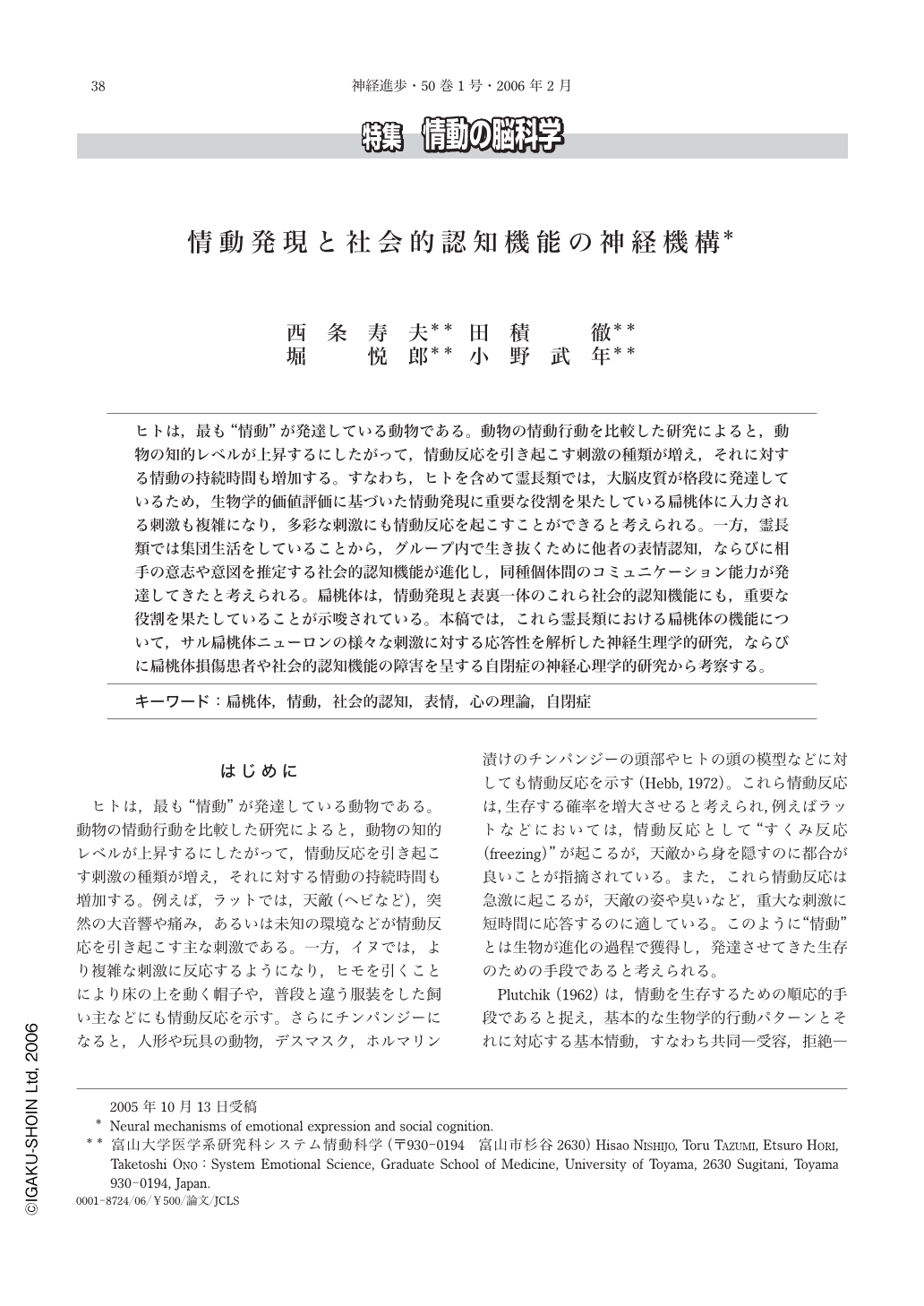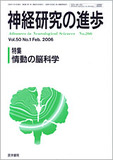Japanese
English
- 有料閲覧
- Abstract 文献概要
- 1ページ目 Look Inside
- 参考文献 Reference
ヒトは,最も“情動”が発達している動物である。動物の情動行動を比較した研究によると,動物の知的レベルが上昇するにしたがって,情動反応を引き起こす刺激の種類が増え,それに対する情動の持続時間も増加する。すなわち,ヒトを含めて霊長類では,大脳皮質が格段に発達しているため,生物学的価値評価に基づいた情動発現に重要な役割を果たしている扁桃体に入力される刺激も複雑になり,多彩な刺激にも情動反応を起こすことができると考えられる。一方,霊長類では集団生活をしていることから,グループ内で生き抜くために他者の表情認知,ならびに相手の意志や意図を推定する社会的認知機能が進化し,同種個体間のコミュニケーション能力が発達してきたと考えられる。扁桃体は,情動発現と表裏一体のこれら社会的認知機能にも,重要な役割を果たしていることが示唆されている。本稿では,これら霊長類における扁桃体の機能について,サル扁桃体ニューロンの様々な刺激に対する応答性を解析した神経生理学的研究,ならびに扁桃体損傷患者や社会的認知機能の障害を呈する自閉症の神経心理学的研究から考察する。
Humans are the most emotional animals. Comparison of emotional behaviors among different species indicates that number of stimuli that causes emotional reaction increases as animals'intellectual level rises, and that duration of emotional reaction also increases. Consistent with these behavioral studies, sensory information transmitted from the cerebrum to the amygdala, which plays an important role in emotional behaviors based on biological evaluation, becomes complex since the cerebral cortex develops greatly in primates including humans. This is why a great variety of stimuli can induce emotional reaction in primates. Furthermore, communication skills among the conspecifics develop in primates since the primates live in a group, and social cognition to recognize emotional expression and to infer intention and volition of other individuals has evolved. The amygdala is also suggested to be involved in social cognition. In the present review, these functions of the amygdala in primates are discussed in reference to monkey amygdalar neuronal responses to various stimuli and neuropsychological studies of autistic patients with deficits in social cognition and patients with amygdalar lesions.

Copyright © 2006, Igaku-Shoin Ltd. All rights reserved.


